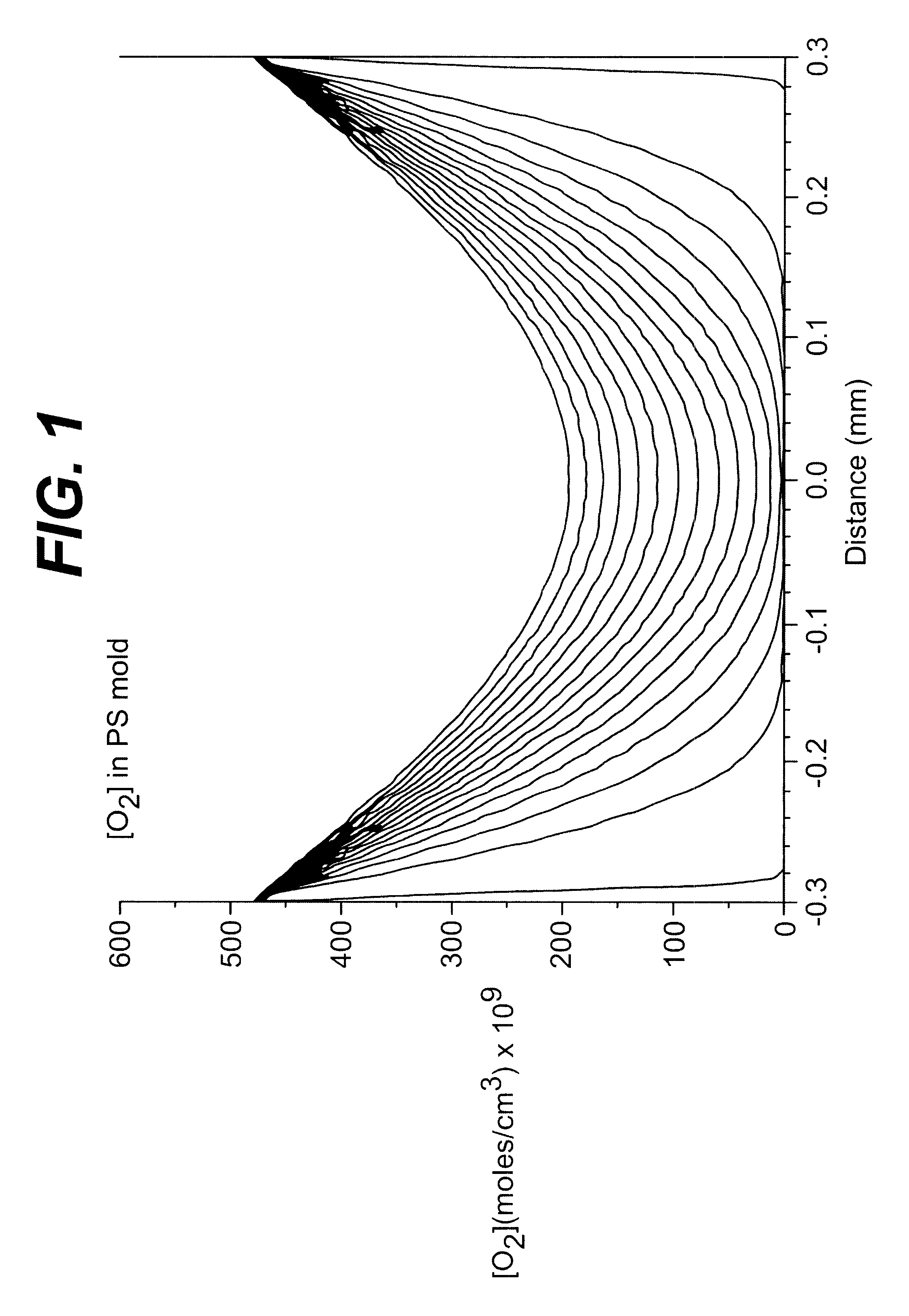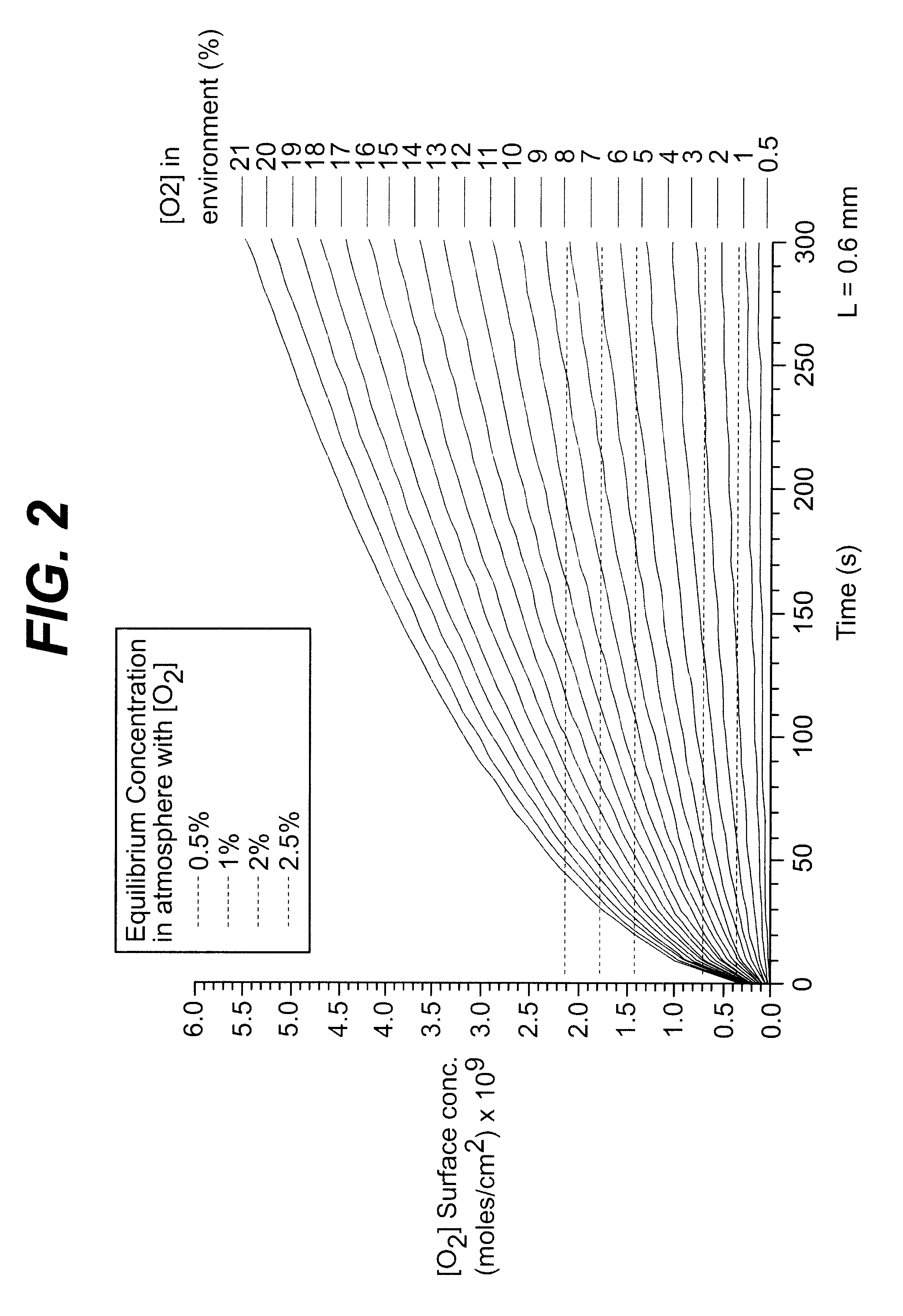Process of manufacturing contact lenses with measured exposure to oxygen
a technology of oxygen exposure and manufacturing process, which is applied in the field of manufacturing contact lenses with measured exposure to oxygen, can solve the problems of significant impact on the manufacturing cost per contact lens, increase yield, etc., and achieve the effect of cost reduction and increased yield
- Summary
- Abstract
- Description
- Claims
- Application Information
AI Technical Summary
Benefits of technology
Problems solved by technology
Method used
Image
Examples
Embodiment Construction
Contact lenses comprising Etafilcon A were produced in three types of manufacturing lines, indicated as Manufacturing Lines A, B, and C in the table below.
Mold sections were prepared by a supplier, packaged and shipped to Vistakon. Prior to their use, essentially all the molecular oxygen was removed from the mold sections by exposing the mold sections to vacuum for a minimum of 8 hours, then the molds were held in a nitrogen environment. Only after the mold sections were inserted into the manufacturing line was oxygen introduced. The levels of oxygen are recorded in the table below.
After the mold sections were inserted into the manufacturing line, they were exposed to the oxygen level listed in the table for the time listed in the table. For all runs, 256 cured mold assemblies were sampled in-process, i.e after exiting the cure tunnel, for puddles and the percentage of lenses with puddles was calculated. In addition, a sample of 50 lenses per run were analyzed fo...
PUM
| Property | Measurement | Unit |
|---|---|---|
| depth | aaaaa | aaaaa |
| thickness | aaaaa | aaaaa |
| thick | aaaaa | aaaaa |
Abstract
Description
Claims
Application Information
 Login to View More
Login to View More - R&D
- Intellectual Property
- Life Sciences
- Materials
- Tech Scout
- Unparalleled Data Quality
- Higher Quality Content
- 60% Fewer Hallucinations
Browse by: Latest US Patents, China's latest patents, Technical Efficacy Thesaurus, Application Domain, Technology Topic, Popular Technical Reports.
© 2025 PatSnap. All rights reserved.Legal|Privacy policy|Modern Slavery Act Transparency Statement|Sitemap|About US| Contact US: help@patsnap.com



